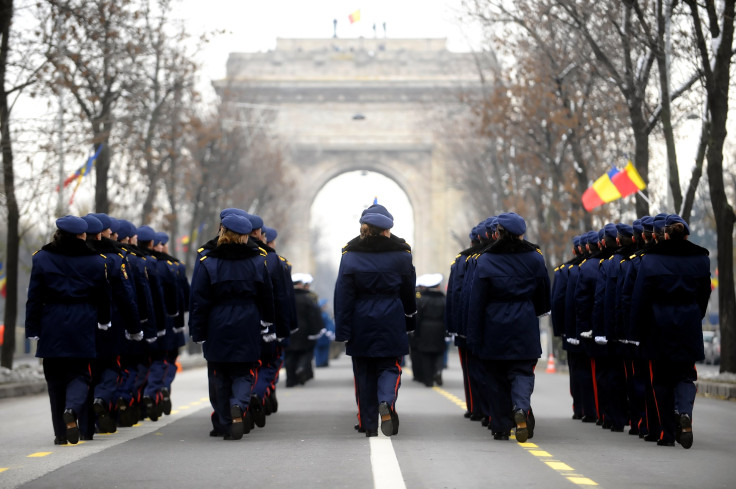Men Feel More Powerful When Marching In Sync, But Does It Also Make Them More Inclined To Violence?

Ever wonder if there was something other than tradition that caused men to move in unison when marching into battle. Chances are you haven’t, but a pair of psychologists did and what they concluded actually makes pretty good sense. Apparently, walking in military formation not only intimidates the enemy, but also makes the men doing the walking feel more powerful and possibly more aggressive.
Most uniformed military units march into combat in a singular motion. A pair of University of California, Los Angeles, social scientists hypothesized that walking in step may slightly alter the mindset of the marchers, according to a press release. To test out their theory, the researchers recruited 98 male undergrads and had them march around campus in lockstep, and had the other half casually stroll about. Afterward, each participant was given a series of tests to determine how threatened the men felt during their parade, without asking them directly. For example, the men were shown photographs of other men’s angry faces and were asked to estimate their height.
Results showed that the undergrads who walked in unison judged the angry faces as “significantly less physically imposing” than those who walked about casually. This led the researchers to conclude that moving in a synchronized manner made men perceive an opponent as less intimidating. “If we had more people marching together, and if they had marched together repeatedly like police and the military do in drills, we would have expected a stronger effect,” coauthor Colin Holbrook explained in the press release.
A 2012 study from the same university found that marching in unison not only gives men confidence but may also lead them to act more aggressively. “Experiencing moving in unison with another person appears to make us paint a less threatening picture of a potential assailant,” said Daniel Fessler, coauthor of the study. “They loom less large and formidable in the mind’s eye. Simply walking in sync may make men more likely to think, ‘Yeah, we could take that guy!’” This phenomenon is observed in other species as well — dolphins, for example. Those that swim in tight packs are more likely to win fights with other dolphins.
Now, while it’s important for soldiers to be aggressive when marching into battle, it’s questionable whether this same tactic is as useful in the police force. Also, the researchers declined to choose sides over whether or not the police should use the same militarized techniques as the army, but they did offer their opinion on the matter. "The military mission is an ‘us vs. them’ mission. … But that’s not the mission of civilian police forces. The motto is ‘protect and serve.’ … When we train them the way we train soldiers, we run the risk that we’re eliciting an ‘us vs. them’ psychology,” Kessler said, The Washington Post reported.



























